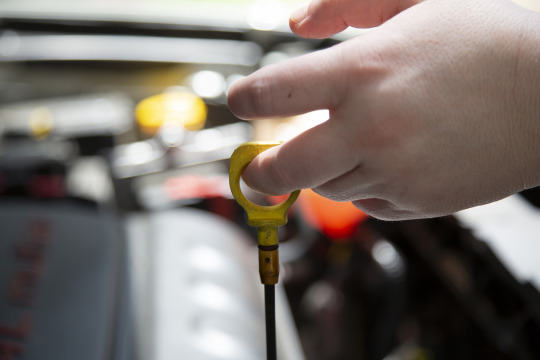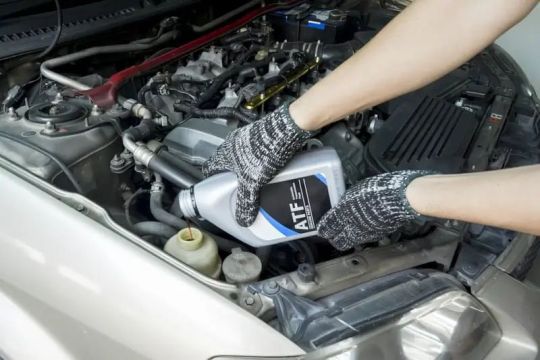#AutomotiveTips
Explore tagged Tumblr posts
Text
Types of Tire Repair: A Complete Guide

Discover various types of tire repairs, from plug and patch to sealants, ensuring safe, lasting solutions for your tires.
#automotivetips#tiretypes#offroadtires#tireguide#tireknowledge#tiresafety#carcare#artists on tumblr#bill cipher
3 notes
·
View notes
Text

In today's automotive market, counterfeit auto spare parts are a growing concern for vehicle owners and repair professionals. Identifying fake parts is crucial to ensure the safety, performance, and longevity of your vehicle. According to experts, one of the key indicators of counterfeit parts is poor packaging quality. Genuine manufacturers typically use high-quality materials and precise branding, whereas fake products often feature mismatched logos, spelling errors, or faded prints. Another essential tip is to verify the product code or serial number on the part with the manufacturer’s database.
Experts also recommend purchasing spare parts only from authorized dealers or trusted suppliers. Counterfeit parts often come with a suspiciously low price tag, which can be tempting but ultimately costly due to frequent failures or potential safety risks. Additionally, inspecting the physical quality of the part can provide clues; genuine parts are made with durable materials and precision engineering, while fakes may have visible defects or substandard finishes. By staying informed and vigilant, vehicle owners can avoid the pitfalls of counterfeit auto spare parts and ensure their vehicles run safely and efficiently.
For more detailed tips: Learn how to spot counterfeit auto spare parts with expert advice
#AutoSpareParts#FakePartsDetection#AutoPartsTips#CounterfeitParts#VehicleSafety#SparePartsGuide#AutoRepair#CarMaintenance#GenuineParts#AutomotiveTips
0 notes
Text
5 Expert Tips for Finding the Perfect Pre-Owned Car Online

Shopping for a pre-owned car has never been easier, thanks to the convenience of online platforms. With access to detailed listings, competitive prices, and a variety of options, you can confidently find your ideal vehicle from the comfort of your home.
Here are 8 essential tips to help you make the best choice:
Check the Mileage Low mileage equals less wear and longer lifespan. Choose wisely for a cost-effective and reliable investment.
Look at Service Records Inspect maintenance history to ensure the car is well-cared for and free from hidden issues.
Verify a Clean Title A clean title means no accidents or financial claims. Always confirm ownership details for a safe investment.
Evaluate the Condition Avoid major repairs by choosing a car in good mechanical and aesthetic shape.
Choose Popular Brands Select trusted makes and models known for reliability and durability.
Prioritize Fuel Efficiency Fuel-efficient cars save money and are eco-friendly. Consider hybrids or compact models.
Check Safety Features Modern safety systems like airbags and stability control ensure security for you and your family.
Select the Right Type Match the car to your lifestyle, whether it’s for daily commutes or adventure trips.
Explore trusted dealerships like Glory Motors to find pre-owned cars for sale in Rock Hill and make your car-buying experience effortless.
#PreOwnedCars#CarShopping#OnlineCarBuying#CarBuyingTips#UsedCars#CarMaintenance#CarSafety#FuelEfficientCars#CarDealerships#GloryMotors#RockHillCars#CarInvestment#CarBuyingGuide#AutomotiveTips#CarShoppingOnline#CarBuyingExperience#UsedCarTips#CarSafetyFeatures#CarBrands#CarMileage#CarServiceRecords#CarTitle#CarCondition#CarFuelEfficiency#CarSafetyTips#CarLifestyle#CarAdventure#CarCommuting#CarDeals#CarSales
0 notes
Text
벤츠 메인배터리 경고등 원인과 관리 꿀팁
0 notes
Text
Why a Faulty Exhaust System Is a Serious Danger

The exhaust system of your vehicle is of immense importance in the proper running and safety of your engines. But if it fails to work as expected, it becomes a serious risk to both the vehicle owner as well as the car itself. A damaged exhaust system might produce dangerous level of carbon monoxide emission, which can cause death if inhaled for a long period of time. It also has a significant contribution to bad gas mileage—resulting in going through your gasoline quicker. Furthermore, a bad exhaust system may make your engine to backfire or sometimes emit a lot of black smoke that will make your vehicle to lose power and stall. There are many dangers of not maintaining the exhaust system but one of them is that your vehicle may not pass its emission test. If the vehicle does not pass the mentioned requirements, which may include fines or inability to renew the registration of the vehicle. They should therefore ensure that there is proper attention to exhaust issues as they are very sensitive. When it comes to your car, pay attention to that peculiar odor in the car, the infamous ‘check engine’ light. Taking your car for exhaust repair is critical in that it guarantees the optimality of your car’s efficiency and your health.
Read more: Vehicles exhaust system can be dangerous
#ExhaustSystem#VehicleSafety#CarbonMonoxide#FuelEfficiency#CarMaintenance#EngineTrouble#CarRepair#VehicleCare#ExhaustLeaks#AutomotiveTips#CarProblems
0 notes
Text
How Mack Transmission Fluid Keeps Your Truck Running Smoothly 🚛💨

Introduction
Got a Mack truck? 🚚 Then you know that keeping your transmission in top shape is crucial for a smooth ride. One of the best ways to ensure your truck runs efficiently is by using the right Mack transmission fluid. Let's dive into why this fluid is essential for your truck and how it can boost performance.
For premium-quality fluid, check out Doxa Lubes.
🚛 Why Mack Transmission Fluid is Important
Transmission fluid isn’t just any lubricant—it’s specifically designed to protect your truck’s gears and ensure smooth shifting. The Mack transmission fluid is formulated to handle heavy loads, extreme temperatures, and long hauls. Using the right fluid can make all the difference in how your truck performs.
Benefits of using Mack Transmission Fluid:
Prevents Gear Wear: Reduces friction and prevents gear damage.
Boosts Fuel Efficiency: Helps your truck use less fuel.
Temperature Stability: Stays effective in extreme hot or cold conditions.
Longer Transmission Life: Keeps your truck running smoothly longer.
🚨 Signs It’s Time to Change Your Mack Transmission Fluid
Is your truck acting up? Here’s how to know it’s time for a fluid change:
Rough Gear Shifts: Jerky gear changes are a warning sign.
Burnt Smell: A burnt odor indicates old or contaminated fluid.
Dark Fluid: Transmission fluid should be red or amber; if it’s dark, it’s time to replace it.
Leaking Fluid: Puddles under your truck? You might have a leak.
🛠️ Pro tip: Don’t wait for these signs! Regular checks and replacements can save you from costly repairs.
🔧 Quick Guide to Replacing Mack Transmission Fluid
Want to change your Mack transmission fluid yourself? Here’s a quick how-to:
Cool Down: Let your truck rest before starting.
Locate the Drain Plug: Underneath the truck, find the transmission pan.
Drain the Fluid: Use a wrench to loosen the plug.
Refill with Fresh Fluid: Add new fluid using a funnel.
For high-quality replacement fluid, visit Doxa Lubes.
💪 Keep Your Truck Running Strong
Using the right Mack transmission fluid is key to maintaining your truck’s performance. Regular maintenance keeps your transmission in top shape, boosts fuel efficiency, and prevents unexpected breakdowns. Don’t wait until it’s too late—invest in the best fluid today!
👉 Check out Doxa Lubes for top-quality transmission fluid that’s perfect for Mack trucks!
0 notes
Text
What Does the Smoke from Your Car Mean?

Seeing smoke coming from your car is never a good sign. Understanding the type of smoke can help you diagnose the issue before it leads to expensive repairs:
White Smoke: This usually means there’s a coolant leak, possibly due to a blown head gasket or cracked engine block. Ignoring it can lead to overheating and even engine fires.
Black Smoke: Typically indicates your car is burning too much fuel, often due to a clogged air filter, damaged sensors, or fuel system issues.
Blue or Gray Smoke: This is a sign of burning oil, which might result from worn-out seals or leaking piston rings. It can lead to engine damage if not addressed promptly.
If you notice any of these smoke signals, it’s best to get your car inspected by a professional.
Read more: Why is my car emitting smoke
0 notes
Text
Why the Rear Engine Mount is Essential for Your Vehicle's Stability!
🚗 Unlocking the Secrets of the Rear Engine Mount 🚗
Did you know that the rear engine mount is crucial for your vehicle’s overall performance and stability? This often-overlooked component plays a significant role in absorbing vibrations and ensuring the engine remains securely in place.
Key Points to Consider:
Vibration Reduction: The rear engine mount minimizes engine vibrations, providing a smoother ride.
Engine Alignment: It helps keep the engine aligned with the transmission, reducing wear and tear on other components.
Safety First: A failing rear engine mount can lead to engine movement, potentially causing damage to surrounding parts and compromising safety.
Regular inspections and timely replacements of the rear engine mount can save you from costly repairs down the road. Keep your vehicle running smoothly and safely!
🔧 Pro Tip: If you notice unusual vibrations or noise from your engine, it might be time to check your rear engine mount!
#RearEngineMount#VehicleStability#AutoMaintenance#CarCare#EnginePerformance#SafetyFirst#AutomotiveTips#VibrationControl#CarEnthusiasts#MaintenanceMatters
0 notes
Text
5 DIY Car Maintenance Tips You Need to Know
Learn how to save money and keep your car running smoothly with these 5 DIY Car Maintenance Tips! 🛠 From checking your oil to washing your car, these simple "!tasks can make a big difference
0 notes
Text
Radio Code ALFA ROMEO 955 VP2 ECE CONTINENTAL 01561021140
Are you locked out of your ALFA ROMEO 955 VP2 ECE car radio? Don't fret; we've got the solution! Follow these simple steps to regain access to your car stereo, radio, or SatNav with our online service.
Radio Details
Make: ALFA ROMEO
Model: 955 VP2 ECE
Manufacturer: CONTINENTAL
Part/Model Number: 0 156102114 0 (01561021140)
Radio Code Price: Just $6!
Radio Code Entry Procedure
Turn your ignition key to the run position.
Press the unit's ON/VOL control.
Look for the words "CODE" or "Please enter Anti-Theft Code" to appear on the display.
Enter the 4-digit code by pressing the corresponding buttons in sequence.
Finding Your Serial Number To locate your radio's serial number, follow these steps:
Remove the radio from your vehicle's dashboard.
Check the labels on the unit to find your radio's serial number.
CONTINENTAL Serial Numbers For CONTINENTAL-made Chrysler units, the serial numbers typically have 19 or 21 letters and digits. They often start with "A2C" or "A3C," and you can find them printed on the label. Here are some examples:
Serial: A2C9835610050039869
Serial: A3C180034810050032144
If you encounter any difficulties identifying the serial numbers, please don't hesitate to contact us for assistance.
Unlock the melodies in your ALFA ROMEO today with our quick and reliable service! For just $6, you'll receive your anti-theft security code instantly by email. Say goodbye to radio woes and hello to your favorite tunes.
#ALFAROMEO#CarRadio#RadioCode#UnlockRadio#CarStereo#SatNav#AntiTheft#CONTINENTAL#RadioSecurity#HowToGuide#AutomotiveTips#VehicleMaintenance#CarAccessories#AutoRepair#VehicleSecurity#OnlineService#TechHelp#RadioSerialNumber#IgnitionKey#VehicleAudio
0 notes
Text
How To Check Automatic and Manual Transmission Fluid Levels

Checking the transmission fluid levels in your vehicle is an important part of routine maintenance. Proper fluid levels can help extend the life of your transmission and prevent costly repairs. Here's how to check the fluid levels for both automatic and manual transmissions. Automatic Transmission Fluid: - Start your vehicle and let it run for a few minutes to warm up the transmission fluid. - Locate the transmission fluid dipstick, which is usually located near the back of the engine. - Remove the dipstick and wipe it clean with a cloth. - Reinsert the dipstick fully and then remove it again to check the fluid level. - The fluid level should be between the "Full" and "Add" marks on the dipstick. If the level is low, add fluid until it reaches the "Full" mark. Be sure to use the type of fluid recommended in your vehicle's owner's manual. Manual Transmission Fluid: - Locate the transmission fluid check plug, which is usually located on the side of the transmission. - Remove the check plug and insert your finger into the hole. The fluid should be level with the bottom of the hole. - If the fluid level is low, add fluid until it reaches the bottom of the hole. Again, be sure to use the type of fluid recommended in your vehicle's owner's manual. - Replace the check plug and tighten it securely.

It's important to check your vehicle's transmission fluid levels regularly to ensure proper performance and prevent potential damage. If you notice any leaks or abnormalities with the fluid, it's best to have your vehicle inspected by a professional mechanic. By following these simple steps, you can help keep your transmission running smoothly for years to come. Read the full article
#autorepair#automatictransmissions#automotivetips#carcare#carperformance#DIYcarmaintenance#engineoil#fluidlevels#manualtransmissions#routineinspections#transmissioncheckplug#transmissiondipstick#transmissionhealth#transmissionleaks#transmissionproblems#transmissionrepair#transmissionservice#vehiclefluids#vehicleinspections#vehiclemaintenance
0 notes
Text
Repairable Tire Punctures: Quick Fixes on the Go!
0 notes
Text
What are the benefits of using automotive masking tape for painting cars?
Automotive masking tape is a type of tape that is specifically designed for use in painting cars. It has a number of benefits over standard masking tape, including:

High adhesion: Automotive masking tape has a very strong adhesive that will hold it in place even when exposed to high temperatures. This is important when painting cars, as the paint can reach very high temperatures during the drying process.
Resistant to solvents: Automotive masking tape is resistant to solvents, which means that it will not dissolve when exposed to paint thinner or other solvents. This is important because it prevents the tape from leaving any residue behind when it is removed.
Easy to remove: Automotive masking tape is easy to remove without leaving any residue behind. This is important because it prevents the need to clean up any mess after the car has been painted.
Visibility: Automotive masking tape is often brightly coloured, which makes it easy to see and identify. This is important when painting cars, as it helps to ensure that the tape is applied correctly and that no areas are missed.
The benefits of automotive masking tape
Automotive masking tape is also available in a variety of widths and lengths, which makes it easy to find the perfect tape for any job.
Here are some of the specific benefits of using automotive masking tape for painting cars:
Prevents overspray: Automotive masking tape can help to prevent overspray, which can ruin the finish of a car.
Creates clean lines: Automotive masking tape can help to create clean lines between different colours of paint.
Protects areas that should not be painted: Automotive masking tape can protect areas of a car that should not be painted, such as the windows and headlights.
Saves time and money: Automotive masking tape can save time and money by preventing the need to repaint areas that have been oversprayed.
Overall, automotive masking tape is a valuable tool for anyone who is painting a car. It can help to prevent overspray, create clean lines, and protect areas that should not be painted. This can save time and money, and it can help to ensure that the final finish of the car is as good as possible.
Become-a-distributor: https://www.tubetape.works/become-a-distributor
#automotive masking tape#large tube tape#automotivemaskingtape#maskingtape#carpainting#cardetailing automotivetips#carcare#carwash#carmodification
0 notes
Video
youtube
Learn How to Take Care of Your Car: Important Tips for Keeping It Happy and Healthy! your ultimate guide to all things car! From simple car maintenance tips to expert advice, we'll help you keep your car in tip-top condition. Whether you're a seasoned car owner or a first-time driver, our videos are packed with practical advice, interesting stories, and easy-to-follow guides. 💡 What you can expect: ✔️ Pro tips to improve your car's performance ✔️ Maintenance tips to save you money ✔️ Step-by-step DIY guides ✔️ Insightful reviews and comparisons Keep an eye out for our new videos every week that will help you learn all about taking care of cars! Click the Subscribe button to join our fun group of car lovers! And remember to like our videos, share them with your friends, and tell us your own tips—we can’t wait to hear from you! These tips can help you understand how to look after a car and keep it safe and fun to drive! Did you know that if you check your car's tire pressure, it can help the car go farther on the same amount of gas? Just doing little things like this can really help! Watch our new video for simple and cheap ways to take care of your car so it runs really well! If you have a good tip that helps you, tell us in the comments – your idea could help someone else too! Don't forget to join our channel and click the bell so you can see when we post new videos every week. Let's learn how to be better drivers together! #CarTips #DIYCarCare #AutoHacks #SaveMoneyDriveSmart #CarCare #AutomotiveTips #DIYCarMaintenance #CarHacks #DrivingSmart"
0 notes
Text
Common Problems with Remote Car Starters and How to Resolve Them
Are you tired of facing those frustrating moments when your remote car starter just won't cooperate? You're not alone! Many car owners experience common issues that can make starting your engine from afar feel like a gamble. But fear not! In my latest article, I break down these common problems and provide practical solutions to get your remote starter purring like a kitten again.
Stay warm in winter and cool in summer with a reliable remote car starter! 🌟
🔑 Read on to learn how to troubleshoot and enhance your remote starting experience!
#CarMaintenance #RemoteStarter #AutomotiveTips #CarTech #VehicleCare #DrivingSolutions #CarProblems #TechTroubleshooting #AutoLife #WinterReady #SummerCool #CarEnthusiast
🌍 Let's make your driving experience smoother together!
0 notes
Photo

DIRGAHAYU INDONESIA Selamat Hari Ulang Tahun RI ke-74, SDM Unggul Indonesia Maju. Di Hari Kemerdekaan Bangsa Indonesia, banyak dari kita yang masih merayakan-nya hanya sekedar Hari Libur saja, tapi sebenarnya banyak sekali yang bisa kita lakukan untuk terus memperjuangkan Kemerdekaan Bangsa Kita Tercinta, INDONESIA. #dirgahayuindonesia #17agustus #videokemerdekaan #videodirgahayu #video17an #video17agustus #dirgahayukemerdekaan #merdekaindonesia # #automotive #automotivetips #creative #merdeka #hondaisme #HondaGIIAS2019 #informasi_terkini #infoupdate #samarinda #kotasamarinda #samarindaupdate #samarindaterkini #infosamarinda #samarindaetam #kaltimpost #kaltim #samarindapost #indonesia #kabarsamarinda #hallosamarinda (di Balikpapan) https://www.instagram.com/p/B1OnMhCnvk2/?igshid=14kesh1jmqsi2
#dirgahayuindonesia#17agustus#videokemerdekaan#videodirgahayu#video17an#video17agustus#dirgahayukemerdekaan#merdekaindonesia#automotive#automotivetips#creative#merdeka#hondaisme#hondagiias2019#informasi_terkini#infoupdate#samarinda#kotasamarinda#samarindaupdate#samarindaterkini#infosamarinda#samarindaetam#kaltimpost#kaltim#samarindapost#indonesia#kabarsamarinda#hallosamarinda
0 notes